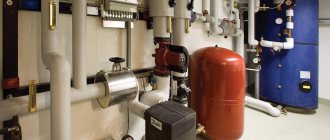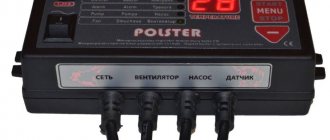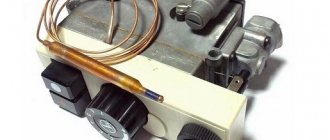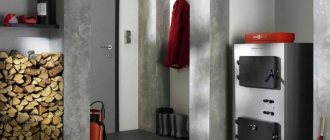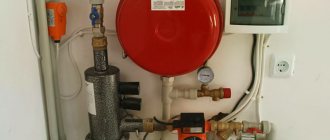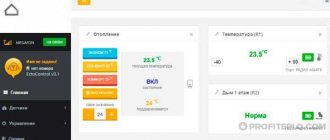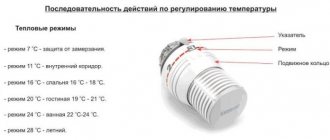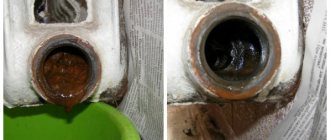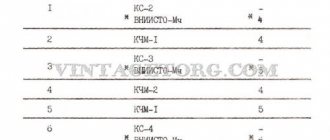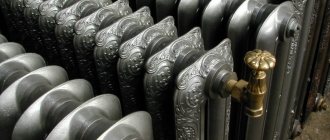This article will talk about weather-sensitive automation. This topic seemed interesting to us, since many people do not know why it is needed. You are probably also wondering about the need for such automation. In today's article we will try to analyze this issue so that you can better understand whether you need it or not.
What is weather-compensating automation?
First of all, it is a set of software hardware that ensures the operation of the heating system according to a given algorithm. The algorithm is simple - the temperature outside decreases - the temperature of the coolant increases, which is released into the radiator system and vice versa. This is done in order to proactively compensate for increasing or decreasing heat losses that are associated with the outside air temperature.
It would seem simple and good, but on the other hand, this simplicity hides the main drawback - the time lag that always occurs when day and night temperatures change. Modern houses have low heat transfer, so when the temperature drops at night and the controller handles it, the effect does not yet occur. Following the night temperature, the controller sees the day temperature, but the night effect has not yet occurred. No amount of adjusting the slope and rise of the curve can eliminate this drawback. Especially, a big mistake is connecting heated floors to a weather-compensated automation system. There this delay is even more noticeable.
Weather-dependent automation provides us with temperature changes, but does not do it entirely correctly. These changes are only visible when the temperature drops seasonally. On the one hand, you can pay a lot of money for automation and it will do it on its own, or once a month you can go into the boiler room and turn the knob on the boiler a little.
Characteristics of automatic heating system control systems
At the moment, there is a wide range of heating automatics on the market. Despite the differences in design, functionality and parameters, all automation is subject to the same requirements, the fulfillment of which is mandatory.
The first and most important requirement is reliable and effective feedback, which is achieved through the presence of highly sensitive thermal sensors. When the automation is operating, minimal temperature differences will still appear, and the task of the sensors is to prevent a noticeable difference.
In addition, an important parameter when choosing automation for heating is a clear and pleasant interface, which will allow you to make adjustments without any effort or knowledge (more details: “
Adjusting the heating system - details from practice
"). You will have to pay for such simplicity, since even the simplest control panel hides a complex controller for the heating system. The reliability of these devices is very high, but the cost corresponds to the high quality.
All devices must be safe and reliable - this is a prerequisite. Installation of such systems is usually carried out by qualified specialists, but there are also models that you can install yourself.
Differences in weather-compensating automation
So, there are boilers in which weather-dependent automatic functions are already preinstalled in the boiler program (usually wall-mounted boilers). In order to implement weather-sensitive functions, you just need to purchase an outside temperature sensor and install it. It is inexpensive and effective, in this case automation will be useful to us (Since we pay practically nothing for it).
Another situation is when we purchase a floor-standing boiler. Here automation, as a rule, is not built in. And if you want to get such automation, you will need to solve it externally. You will have to purchase two mixing units, since there is no point in working with one, purchasing a controller, purchasing all the necessary terminals for connection. Purchase a manifold and a certain amount of shut-off valves, fittings and everything else that is needed to assemble the hydraulics. After all this, you will need to pay for the connection and to get it all set up (approximately 1500-2000 €)
Features of use
Weather-compensating automation (PA) is used in two types of boilers.
Wall
Automation is built into most of these devices by the manufacturer. They are hung on a vertical surface during installation, which is why they got the corresponding name. A medium-sized device takes up little space. Recommended for use in small private houses where it is impossible to allocate a separate room for the boiler room. Compared to the floor version, the wall version is cheaper. PA involves installing a sensor that measures outdoor temperature.
Photo 1. Wall-mounted boiler installed in the kitchen. Typically, such devices are equipped with weather-sensitive automation.
Floor
The use of a floor-standing boiler is justified in a large country house. The cost of the device is higher than that of its wall-mounted counterpart, but operation is cheaper.
Rare models have a built-in controller - you will have to buy it separately. You will also need to purchase and install a lot of additional equipment: mixing units, terminals, hydraulic system. For strapping you need a place, preferably a separate room. In addition, you will need to hire a specialist for connection and debugging. The total amount will be 100 - 150 thousand rubles.
Disadvantages of weather-sensitive automation
Here, oddly enough, there are much more significant positions
- Price if we are talking about a floor-standing boiler.
- The main disadvantage of external weather-compensating automation that is not built into the boiler is the difficulty of maintenance. Often, people call repairmen without even knowing the model of their controller. There are a lot of controllers, so they don’t carry them with them, except in cases where they know exactly for what purpose and model of boiler they are going. The controller cannot be repaired on site. You have to pull out the wires that are connected to the controller and connect them directly. This is the worst case scenario. At best, they take the controller away, check it, and buy a new one. The result is unnecessary spending and worry. In contrast to the lack of weather-compensated automation. As a rule, nothing breaks there due to regular maintenance.
- With automation, which is connected to a large number of electronic devices, there are problems and it is impossible to eliminate them, you just need to change them.
Adjusting the heating system using pumps
Among the well-known schemes for installing heating systems controlled from a weather-dependent automation unit, the optimal option for regulating the heating temperature of rooms is a scheme using circulation pumps.
This scheme is more used for heat supply to district heating buildings, when additional pumps are installed at heating points to pump coolant from the main to a specific consumer. In this scheme, in addition to the pumps themselves, other equally important elements are used, for example, a heat accumulator and a hydraulic separator - a hydraulic arrow. The essence of this method is to quickly increase the flow rate of coolant to the radiators by switching the pump operation. After receiving information from external and internal sensors, the control unit, according to the program, selects the operating mode of the circulation pump. By increasing or decreasing the coolant supply rate, the automation regulates the flow pumped into the radiators. To achieve the desired temperature, the automation opens, or vice versa, closes the three-way mixing valve and the liquid heated to the desired temperature under the action of the pump enters the battery circuit.
We recommend reading: Central heating: principle of operation, advantages and disadvantages, failure
This option for controlling the heating system using pumps allows you to bring the room temperature to the desired value in a very short time without adjusting the burner of the heating boiler. It is simple and reliable, and heating boilers do not need to be constantly adjusted, setting the temperature to 40-45 degrees.
Situations in which it is impossible to do without weather-sensitive automation
The first situation is when the customer likes to twist knobs and adjust something, that is, he likes to “play around”. Because of his love, he requires the installation of weather-compensating automation.
The second situation is when there is a need to equip a boiler room that supplies many different objects. For example, the main house, security house, separate garage, bathhouse, swimming pool, ventilation, and so on. Here, except for weather-dependent automation, the problem cannot be solved. This case is atypical, since usually houses up to 500 square meters do not require any weather-sensitive automation.
The third case is production. For example, 12 meters high ceilings, 5 thousand square meters of area, 60 thousand cubic meters needed to be heated. There were no other energy sources except diesel fuel. The consumption was huge, we had to install weather-compensating automatics. Consumption has been reduced by three times, which is vital there.
In an ordinary house, automation is not really needed if you are not too lazy to go into the boiler room and turn the temperature knob. A very simple operation.
Operating principle
When setting up the controller, a “curve” is specified. With its help, the program calculates the need to heat the room. The initial position of the curve is the point at which the temperatures of the coolant and the environment are equal. Typically this is 20 degrees Celsius. After calibration, the device independently monitors the need for temperature changes.
Manufacturers specify several curves in the PA so that setup does not take extra time. Having selected the program, the specialist starts the system. Further, it functions independently.
For better synchronization, it is necessary to install two sensors - one outside, the second inside.
By checking the readings, the system will not produce additional heating at a comfortable room temperature.
For this reason, it is necessary to correctly select the room in which the sensor will be installed.
Warming up or cooling the coolant takes time, so the heating cannot adapt sharply to temperature changes.
Controller
The controller is the core of the hardware device. It monitors sensor readings and sets the room temperature. The factory functions of the device are responsible for heating, and also inform the owner about problems. Custom settings are designed to maintain maximum comfort.
When will weather-compensating automation be useful?
There are devices called convectors. Externally they are very similar to radiators, but their properties are strikingly different.
The main advantage of convectors is their quick response to temperature changes. In 3-5 minutes they are able to warm up the room. During the same time they are able to change the temperature.
If there are heating convectors, weather-compensating automation will implement its function as efficiently as possible.
Self-regulating heating system depending on external temperatures
The basis of this system is a special controller that provides control of the coordinated operation of all heating devices in the house.
The control unit is a small computer to which sensors are connected that take readings that affect the temperature in the room and devices that execute commands from the control unit directly in key devices. The peculiarity of the system is that sensors are located not only in all rooms, but also outside the building. At the same time, these are not simply devices that record temperature; they are a kind of weather stations that take into account other indicators that affect the heating of the room.
Another important component of the system are temperature sensors located indoors. If in a conventional system an electronic programmer is used, which is both a sensor and a controller, then in a weather-dependent system it is sensors that are placed indoors. In addition to air temperature, they take into account its humidity and atmospheric pressure. The information received from internal and external sources is compared and processed. This approach allows you to most accurately determine the difference in temperatures inside and outside the building and select the optimal program for controlling other equipment.
Re-equipment of boilers
After reading our article, someone will still have time to instruct heating system suppliers to use a boiler with modern automation. But what about someone who already has a reliable imported boiler with a standard control panel or a domestic device without a control system at all, but wants to equip it with modern weather-dependent automation?
First of all, I would like to advise you to contact a company that sells boilers of your brand. Almost every serious heating equipment manufacturer has similar automation in its product range. But if one cannot be found or if its parameters do not allow solving the problems set by the customer, one has to select a system from another manufacturer.
There are two options for retrofitting boilers. The first involves automatic control of all system components. This achieves a high degree of automation and a significant reduction in fuel consumption. Unfortunately, it is not always possible to equip boilers with the first option. Systems with an atmospheric burner are difficult to modernize in this way. For example, popular domestic AGV boilers are equipped with a burner with an “eternal” flame, ignited manually, which does not make it possible to automate the combustion process. For such cases, a second equipment option is provided, which involves maintaining the temperature in the heating circuits automatically using actuators. With this option, the boiler will operate with a constant, usually maximum, supply line temperature and, as it were, “live its own life,” and the heating circuits controlled by the controller will have their own.
The controllers produced are designed for installation on all types of boiler equipment equipped with both forced-air and atmospheric burners. Of course, it should be noted that it is unlikely that you will be able to re-equip the boiler yourself; such work must be entrusted to a specialist from a reliable company with experience in such modernizations.
In conclusion, I would like to note that the acquisition of modern automation is not a tribute to fashion, but a profitable investment of money.
Thermostat ZONT
Weather-compensated heating regulator ZONT H-1 is an intelligent system, remotely controlled via GSM or the Internet. The device is connected via a mobile application, personal account on the manufacturer’s website or via SMS commands. Thermostat capabilities:
- 2G SIM card management;
- transmission of temperature sensor readings and boiler operating mode;
- selection of heating control curve;
- programming room heating for a week;
- notification of errors and emergencies;
- message about a power outage in the house;
- transaction history for 3 months;
- software update via the Internet.
The thermostat is connected in 2 ways - through the terminals on the boiler or with an adapter to the digital bus. Heating control can be performed in relay mode, with periodic switching on of the gas burner. Digital control is possible via an adapter - electronic flame modulation.
Technical characteristics of ZONT H-1:
- operating voltage 10-28 V;
- analog and digital inputs;
- connection of 10 wired and radio sensors;
- operating range from –30 to +55°C;
- exit to mode – 50 seconds;
- plastic case, universal surface mounting.
Operating rules
During operation, you must comply with all requirements and recommendations of the manufacturer. Self-diagnostic tools are built into modern systems, and they themselves can inform the owner about any problems that have arisen. This does not replace the need for periodic inspections and preventative maintenance. During preventive maintenance, the reliability of fastening and cleanliness of sensors, especially external ones, should be checked, and the actuators of the system should be tested. During quarterly prevention, it is also convenient to change the seasonal algorithm of the device.
